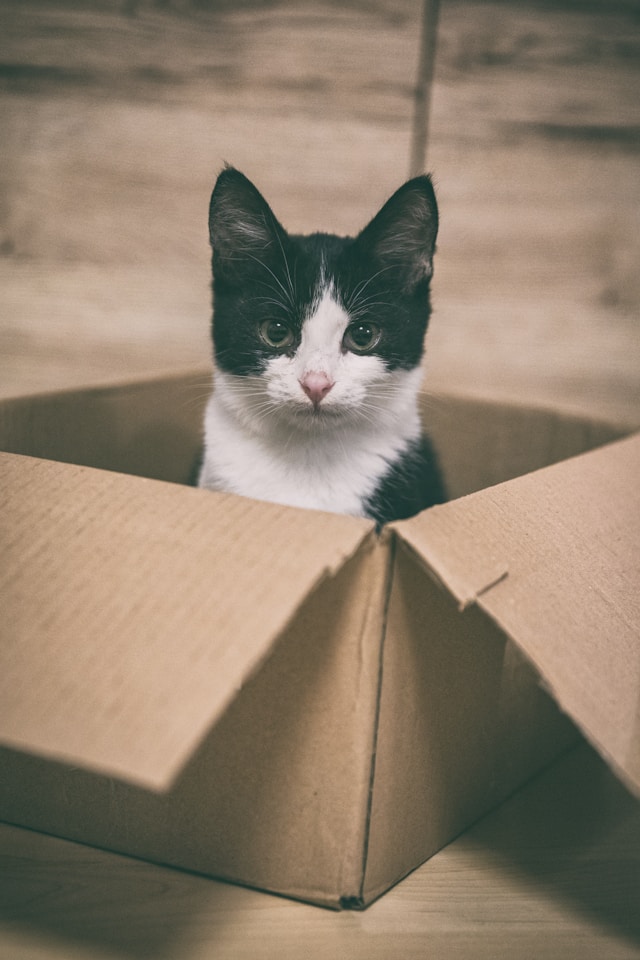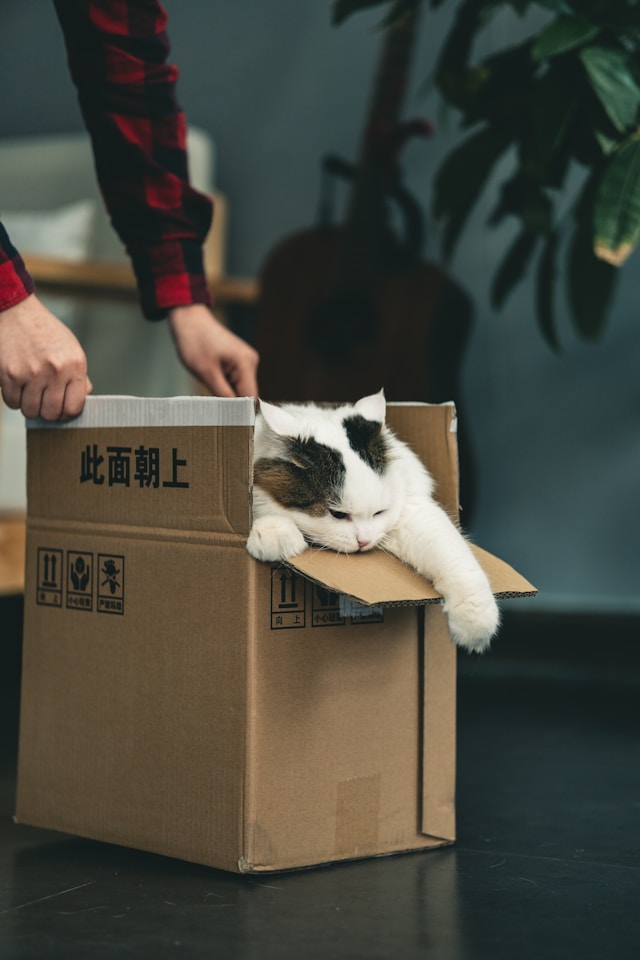It is a must for pet parents that own larger cats as Maine Coons, Ragdolls, or multiple cats, to buy an extra-large cat litter box for convenience purposes. It is important to remember that larger cats tend to take a wider stance. Thus require more space as they go about their business and an enlarged litter box can avail this. It would also minimize the messes caused when using a litter box. In this article, we will discuss some of the popular and good-quality extra-large cat litter box available today in the market.
The review will be all-inclusive, covering the product’s negatives and positives and its key features as well. Perhaps you just adopted a cat or maybe you are looking for a better litter for your feline pet. Either way, you will learn about the most suitable options for your requirements.
Why Size Matters for Cat Litter Boxes?
Being cat parents, we know that cats are DNFs of an average litter box, and only the posh ones are willing to use such boxes. And it is needless to say that large cat breeds still use a whass box when they feel the need to. Cat owners, however, will often only experience this frustration through too-small boxes, improperly shaped boxes, and other similar constructs. This can be difficult for larger cat breeds, especially.
Moving your litter box to a more spacious area is likely the best decision. It will free up room for your cat to rotate and move in all directions while still being able to dig. Cats will be less likely to throw the litter outside the box and more likely to remain comfortable.
Top 10 Extra-Large Litter Boxes
Petmate Giant Litter Pan
- Size: 34.63” x 19.75” x 10”
- Capacity: Designed for households with multiple large cats, this tray can hold up to 30 pounds of litter. It’s an open design, which provides cats plenty of room while making daily scooping easy.
- Best For: Owners with large cat breeds and multiple cats.
- Pros: Large capacity, easy to clean.
- Cons: Lacks a lid, so odors may spread if not cleaned regularly.
Nature’s Miracle Just for Cats High-Sided Corner Litter Box
- Size: 26” L x 23” W x 10” H
- Capacity: With high sides and a corner-friendly design, it’s ideal for saving space. The high walls prevent litter scatter and mess.
- Best For: Those looking for a litter box that fits into a small corner while offering plenty of space.
- Pros: High walls, and antimicrobial coating to resist bacterial growth.
- Cons: Sticker at the base may be hard to remove
.
IRIS USA Large Enclosed Litter Box
- Size: 19” L x 15” W x 15” H
- Capacity: This covered box offers privacy while preventing litter scatter. Its door flap minimizes odor escape.
- Best For: Cats that prefer a covered space.
- Pros: Affordable, reduces litter tracking.
- Cons: Door flap may deter shy cats from using it.
Catit Jumbo Hooded Cat Litter Pan
- Size: 22.4” L x 18.3” W x 17” H
- Capacity: The large, covered design helps contain odors while the front door flap ensures privacy. It’s great for big cats or households with multiple pets.
- Best For: Owners who prioritize odor control.
- Pros: Hooded design, built-in carbon filter.
- Cons: Can be bulky in smaller spaces
.
Frisco High-Sided Cat Litter Box
- Size: 24” L x 18” W x 10” H
- Capacity: With high sides, this box is great at keeping litter inside, even for cats that love to dig and kick.
- Best For: Active, large cats.
- Pros: Spacious, easy to clean.
- Cons: Open design can lead to more odor exposure.
Modkat XL Litter Box
- Size: 21” L x 17” W x 15” H
- Capacity: This stylish litter box has both a top and front entry, making it versatile for different cat preferences. It also comes with reusable liners.
- Best For: Cats who enjoy top-entry boxes.
- Pros: Reduces litter tracking, sleek design.
- Cons: Expensive compared to other options
.
LitterMaid Automatic Multi-Cat Litter Box
- Size: 28” L x 18” W x 10” H
- Capacity: This self-cleaning litter box is perfect for large cats or multiple-cat households. It automatically scoops the litter after each use.
- Best For: Owners looking for a low-maintenance, self-cleaning option.
- Pros: Hands-free cleaning, large capacity.
- Cons: High upfront cost, may require frequent refills of clumping litter.
PetFusion BetterBox Non-Stick Litter Box
- Size: 22.6” L x 18.1” W x 8” H
- Capacity: The non-stick coating makes cleaning easier and helps prevent litter from sticking to the sides.
- Best For: Cats that frequently soil the sides of the box.
- Pros: Non-stick, durable.
- Cons: Lower walls than other extra-large options.
GENENIC Large Foldable Cat Litter Box
- Size: 20” L x 16” W
- Capacity: This foldable litter box is perfect for travelers who need something portable yet spacious for their cat.
- Best For: Owners who travel with their pets.
- Pros: Portable, easy to assemble.
- Cons: Cats may take time to adjust to the one-way design
.
KittyGoHere Senior Cat Litter Box
- Size: 20” L x 24” W x 3” H
- Capacity: Designed with senior cats in mind, this box has a low entry point to make it easier for elderly or arthritic cats to enter and exit.
- Best For: Senior cats with mobility issues.
- Pros: Low entry, easy to clean.
- Cons: Low walls don’t contain litter well
How to Research the Product?

The selection of the best extra-large cat litter boxes was a result of thorough studies and practical tests. This is our explanation:
Finding the best Products Online:
We searched the web for, and read the reviews of the most reputed retailers, forums, and expert opinions on the best litter boxes, especially extra-large size. Since they were most in demand and received the highest rating.
The Criteria for Selection:
The scale, sturdiness, simplicity of maintenance, amount of emitted smells, and general aesthetics were among the factors that rated the highest. We also looked at many commentators who had bigger or multiple cats, as they have specific challenges when it comes to using a litter box.
The Procedure of Testing:
The products were used in actual situations with different strains of big cats. All literature, commenting on such parameters as the scattering of litter, the comfort of entrance for cats, and the effectiveness of the box in controlling odors was prepared and recorded. The best boxes also had to withstand the rigors of heavy usage without cracking or warping.
Having filtered a great number of variants, we settled for the best boxes that were user-friendly for both cats and their owners.
Getting Your Cat(s) To Use The Litter Box
The cat may have learned by now that the world does not revolve around the litter box, but it has not been easy at any time to make use of it consistently. Below you will find relevant tips to help maintain the proper use of the litter box by your cat:
Town Planning Does Matter:
The first and foremost consideration about the location of the litter box is that it has to be placed in a quiet area. The best rule of thumb is to always remember that cats think there are too many people around them. Don’t stick it right next to washing machines – that noise can be a deal breaker.
Right Box:
Make sure the litter box selected for the cats, especially the larger ones, can handle the right weight. For older or arthritic cats, see if you can utilize boxes with lower hinges to allow relatively easier access.
Odor:
Cats are clean animals by instinct. To avoid smells and buildup that could discourage your cat from using the box, it is recommended to scoop the litter daily and also do a complete cleanup of the box every week.
Kind Words:
Getting the cat to use the litter box is not a physical activity in which one has to knock out a goal. Instead, it is a game of persuasion and that is where all the sweet talks, encouragement, and rewards comes in. Never reprimand them for soiling the floor.
How Many Litter Boxes Should I Use?
A good rule of thumb is to have one litter box per cat and then add one more, so if there are two cats in the household, three litter boxes should be there. In this way, there is a place for each cat to go to and the competition over the litter box which can cause behavioral problems in the end cats is minimized. Also for larger homes, it makes sense to have the litter boxes in different places so that there is always at least one at easy reach for every cat. What Type of Litter Box Should I Use?
There are many litter boxes to choose from. Which one works for you depends on your cat and how your household is structured. Open Litter Boxes: Most of the time, these are the best for larger cats because they have plenty of room. This, however, may mean more litter being scattered about and odors escaping. Hooded Litter Boxes: These boxes are hooded and thus provide more privacy for your cat and are also more suitable for the containment of odors. However, they might not be very comfortable for some very large cats because of the feeling of being enclosed in a small space.
Automatic Litter Boxes:
If you’re looking for a litter box that does not require you to put in much effort in cleaning, level up your game by purchasing an automatic litter box that self-cleans. They do work well for households with one cat but some models will struggle in even medium multi-cat scenarios.
Each type has its upsides and downsides. Therefore, in choosing a box, parenting behavior of your cat and how much you hate cleaning should also be prime factors determining which box you are going to choose.

How Often Should I Clean My Cat’s Litter Box?
A standard litter box is effective in maintaining your cat’s hygiene as well as helping in keeping your house tidy. Here are some cleaning tips that could work for you:
Day to Day Waste Removal:
Removing waste once a day is considered standard operations. It allows the litter box to not expire and maintains a freshness in the box for the cat.
Litter Box Cleaning Frequency:
The box’s contents should be fully disposed of, once every week’s out. For cleaning, soap followed by water is usually the best option. Cleaners like bleach should be avoided, as they can prevent your cat from using the box.
How Frequently Should One Change Litter?
Based on the variety of litter used, one may change the litter once every week or in two-week’s time. Non-clumping litters generally need to be replaced more often than clumping litters that can go longer periods without replacement.
There are some simple things that can be done to avoid making your cat unhappy and to maintain a clean, odour-free home, and one such measure is to follow a regular cleaning routine.
Why My Cat Has Not Used the Litter Box in a While?
There are many possibilities if your cat does not use the litter box. Here’s how to troubleshoot the problem:
Medical Issues:
The most important one is to eliminate the possibility of the existence of any medical issues. Several medical issues like a urinary tract infection, kidney disorders and arthritis may render using a litter box too uncomfortable for your cat. It is advisable to consult with the veterinarian to establish whether there is an underlying issue.
Stress or Anxiety:
Cats are often described as creatures of habit but this appears to be only partly true because they are also sensitive and easily aggravated. Do not be surprised if the presence of a new home, a new animal, or even a new bag of litter causes extreme discomfort in your cat- enough to make them unwilling to use a litter box. Changes happen and when they do, it takes time for a cat to adjust.
Litter Box Cleanliness:
A cat or a kitten is unlikely to use a litter box which tends to be dirty. Therefore, always adhere to cleaning the box at regular intervals and ensure there is sufficient amount of litter to allow the cat an opportunity to cover and conceal its waste comfortably.
Litter Box:
If your cat has outgrown their current box, they may refuse to use it. Extra-large boxes are required for larger cats to comfortably fit in. If your cat appears to be squished in, changing the litter box to a bigger one is recommended.
In the event that your cat still avoids the litter despite your attempts to resolve all the issues mentioned above, you should seek medical or behavioral assistance for felines.
Conclusion
To keep both you and your feline household mates happy, it’s important to select an appropriately sized extra-large cat litter box and keep the cat litter area clean. Sticking to the right size, ensuring ease of access, and having a cleaning schedule avoids most of the issues that users usually face. However, if there is an occurrence of such issues, the owners of cats should check the medical or behavioral aspects first before altering the configuration of the litter box.
FAQs
According to certain studies, the litter box size should be at least 1.5 times the size of any particular cat. For those who own larger cats, the boxes available for large cat litter should be 24 inches in length.
Possibly, but ensure the box has a hood and a big opening so your cat can adjust to having a lot of space. Large feline cats sometimes prefer a flat space to a covered space as they feel smothered in such spaces.
By performing daily litter scoops, frequent litter box cleans, and using good clumping litter can keep the litter box, and household smells fresh. Alternatively, look for litter box designs that have some form of odor control in its design.





